Exploring 'Stand By Me': A String Quartet Approach

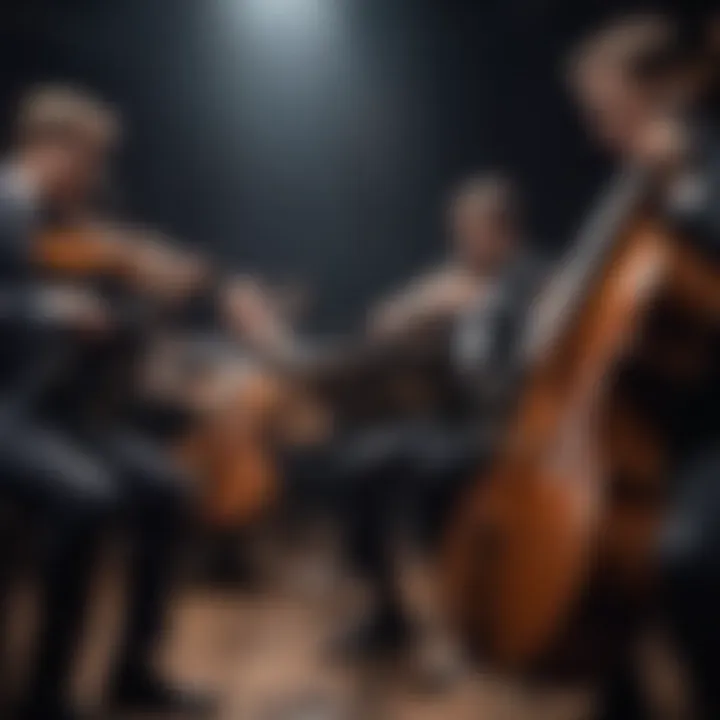
Intro
The charm of a well-composed piece of music lies not just in the notes played, but in the story they tell and the emotions they evoke. 'Stand By Me,' originally written and performed by Ben E. King, transcends its simple lyrics and catchy melody, becoming a universal anthem of loyalty and support. While initially celebrated in its original genre, the song's arrangement for a string quartet offers a fresh and nuanced interpretation. This transformation not only showcases the versatility of the string instruments but also invites listeners to engage with the song from a different angle.
As we take a closer look at this iconic piece through the lens of string quartets, we will explore its historical backdrop, the intricate composition tailored for strings, and the emotional resonance it continues to hold in contemporary settings. With string quartets bridging genres and breathing new life into classic melodies, the artistry surrounding 'Stand By Me' warrants a thorough investigation.
Artist Profile
Biography and Background
Ben E. King was born on September 28, 1938, in Henderson, North Carolina. His journey into music began while he was still a teenager and it was a natural progression from performer to a songwriter, melding elements of rhythm and blues with soul music. King initially gained fame as a member of The Drifters, with hits like "There Goes My Baby". However, it was in 1961 that he carved his name into music history with the release of 'Stand By Me.'
The song itself emerged from a blend of personal experience and popular music trends, echoing the sentiments of love, trust, and camaraderie that resonated with audiences worldwide. Throughout his career, King became an influential figure, not merely for his vocal prowess but also as a songwriter who understood the emotional weight that music carries.
Major Influences and Inspirations
Kings's influences are deeply rooted in the music of his upbringing. Genres like gospel and doo-wop shaped his melodic sensibilities, while artists such as Ray Charles and Sam Cooke left an indelible mark on his musical technique. These inspirations helped him cultivate a sound that was rich with emotion, giving depth to his lyrics and captivating audiences.
His music often reflected the cultural and social dynamics of his time, which adds another layer to understanding 'Stand By Me.' King was not only crafting a song but also creating a statement that spoke to the unity and strength found in community and relationships.
Song Analysis
Theme and Lyrics Breakdown
At its core, 'Stand By Me' conveys a message of unwavering support. The lyrics mirror a deep longing for companionship and reassurance in troubled times. Phrases like "when the night has come" create a visual of vulnerability, followed by a promise that the singer will not face the dark alone. This duality between fragility and fortitude resonates widely and often prompts listeners to reflect on their own connections.
The song's themes also transcend personal relationships and tap into societal bonds. It has been embraced in various contexts, from civil rights movements to personal tributes, showing its adaptability and relevance.
Instrumentation and Composition
When arranged for string quartet, 'Stand By Me' transforms significantly. The composition utilizes the lush timbres of violins, viola, and cello to convey emotional depth absent in the original recording.
- Violins:
- Viola:
- Cello:
- Often take the lead melody, evoking the soaring vocal lines of King. Their ability to create both light, airy passages and rich, resonant tones helps to underline the song's heartfelt message.
- Adds depth, bridging the melody between the violins and the cello. Its unique voice allows it to explore harmonies that enrich the overall soundscape.
- Anchors the arrangement, providing a warm, grounding presence. It represents stability, echoing the very essence of the song's message about standing firm amidst life's challenges.
"When played by a string quartet, 'Stand By Me' can transport listeners to a different time while still retaining its core message, showcasing the adaptability of music across mediums."
Through this exploration, we can appreciate the profound artistry involved in interpreting a song that has bridged generational gaps and genre barriers.
Prelude to 'Stand By Me'
In any discussion of influential music, the mention of 'Stand By Me' is almost a given. This song has not just lingered in the air for decades; it has resonated deeply with audiences for its profound themes of love, companionship, and resilience in the face of adversity. To say its importance transcends genres would be an understatement. Understanding its artistry through the lens of a string quartet provides a fresh perspective on its layered emotional depth and musical structure.
Overview of the Original Composition
'’Stand By Me' is not merely another piece of music; it is a cultural touchstone. Originally recorded by Ben E. King in 1961, its structure is deceptively simple yet incredibly magisterial. The memorable bass line grounds the song while the lush, soaring melody evokes a sense of longing and hope. This intricately woven tapestry of sound demands examination. The harmony found in the original composition creates a rich auditory landscape, inviting listeners to connect on multiple levels.
Historical Context and Impact
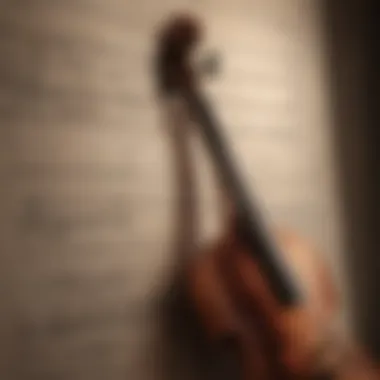
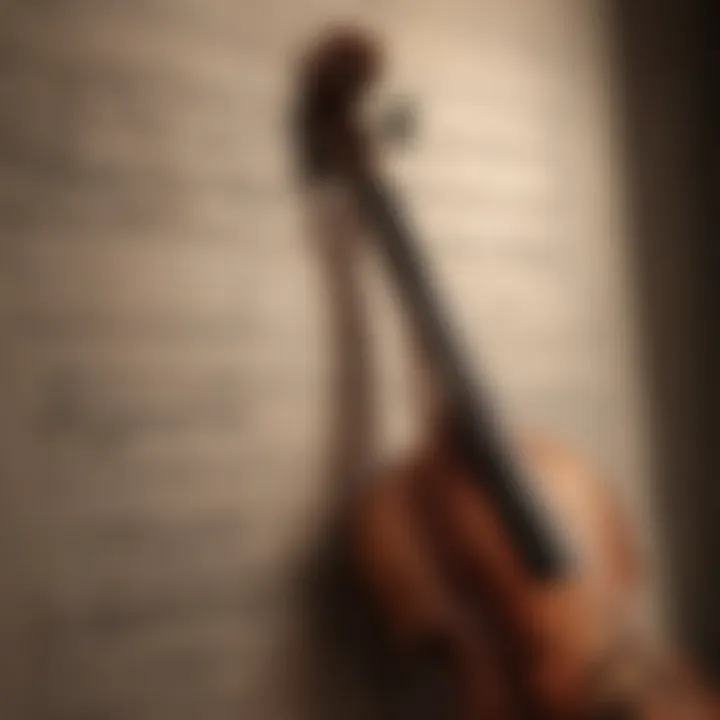
The historical backdrop against which 'Stand By Me' emerged is crucial to understanding its impact. At a time when the civil rights movement was gathering momentum in the United States, the themes of solidarity and camaraderie echoed the struggles and hopes of many. Its placement in film—most notably the 1986 movie of the same name—helped cement its status as an anthem of unity.
It's a song that has been covered by countless artists, each imbuing it with their unique interpretations, but none could surpass the heartfelt sincerity of King’s original rendition. Through the years, its influence has permeated not just music but also literature and visual arts, further embedding it in the cultural fabric of society.
"In every note, there’s a whisper of resilience. 'Stand By Me' is a melody that resonates through time, a reminder of the strength found in companionship."
By delving into the artistic intricacies of 'Stand By Me' through the lens of a string quartet, we can uncover how this ensemble transforms its essence. The strings' rich tones can reflect the song’s emotional weight in ways that silence and breath add profound depth, allowing the audience to experience the narrative anew.
The String Quartet as a Musical Form
The string quartet is widely acknowledged as a significant facet of Western classical music. This chamber ensemble, typically composed of two violins, a viola, and a cello, serves as the backbone for both formal compositions and dynamic reinterpretations of popular tunes like 'Stand By Me.' It's not merely the arrangement of instruments but also their interplay that creates a distinct character, allowing for diverse emotional expressions and technical virtuosity. In this exploration of the artistry surrounding 'Stand By Me,' the string quartet emerges as more than a traditional ensemble; it's a transformative vessel that amplifies the song’s rich emotional depth through intricate harmonization and artistic dialogues between its members.
Structure and Components of a String Quartet
When analyzing the structure of a string quartet, it's fascinating to see how each instrument contributes to a unified sound. The first violin often carries the melody, soaring above the rest, while the second violin supports with harmonies or counter-melodies. The viola typically fills in the middle range, providing a melodic foundation, and the cello anchors the ensemble with its resonant bass lines. This arrangement allows for a complexity that facilitates a dialogue among instruments.
Listen closely, and you’ll hear the nuances in dynamics and articulation; they can express everything from whispering sorrow to a triumphant crescendo. This stylistic interplay is where the magic lies. For 'Stand By Me,' this integral structure offers endless opportunities for reinterpretation. The quartet can weave intricate patterns through the song’s themes, letting each instrument shine at different moments.
A well-executed string quartet performance is akin to a conversation, where each voice plays a role in telling a story.
Importance of the String Quartet in Music History
The string quartet has long held a revered position in the annals of music history, dating back to the late 17th century and gaining prominence with composers like Joseph Haydn, Wolfgang Amadeus Mozart, and Ludwig van Beethoven. These musicians established many of the conventions that still define the genre today. They saw the string quartet as a means to explore complex musical forms, where dialogue and contrast often take center stage.
The quartet’s evolution reflects broader trends in music; as styles changed, so did the roles of each instrument within the ensemble. For example, during the Romantic period, composers began to emphasize individual expression, allowing players to interpret music with more emotional elation. This change has undoubtedly influenced how contemporary musicians approach adaptations of songs like 'Stand By Me.'
Moreover, in the 20th century and beyond, the string quartet transcended its classical roots to embrace various genres, appearing in everything from jazz to rock interpretations. The adaptability of the string quartet underscores its significance; it's not just a historical artifact, but an active participant in the ongoing dialogue of music evolution.
Through the lens of 'Stand By Me,' we can see how the string quartet serves as a bridge between tradition and popular culture, inviting both seasoned musicians and new listeners to engage with timeless themes in fresh ways.
Arranging 'Stand By Me' for String Quartet
Arranging 'Stand By Me' for a string quartet offers a unique opportunity to reimagine a classic song through the lens of string instruments. This transformation not only highlights the timeless melody but also enriches it with depth and texture that might be overlooked in a traditional arrangement. The essence of a string quartet, with its blend of violins, viola, and cello, allows for intricate interplay between instruments, creating a soundscape that resonates with both nostalgia and innovation.
The importance of this arrangement lies in its ability to capture the song's emotional core while allowing performers to showcase their artistry. This arrangement can serve as a bridge connecting genres, illustrating how classical techniques can breathe new life into popular music. These performances can engage listeners in a different way, inviting them to experience the music afresh.
Analyzing the Melodic Elements
When analyzing the melodic elements of 'Stand By Me,' it's crucial to identify the song's signature hooks and motifs. The simple yet powerful melody lends itself well to string instruments, each capable of expressing nuance and emotional weight. The first violin typically takes the lead, playing the main melody while the second violin complements it with harmonies that weave in and out.
This aspect reflects the song's essence, as various interpretations can emerge from the same notes. A performer might choose to embellish certain phrases, adding a touch of vibrato or subtle dynamics to evoke a particular feeling. It's akin to painting with sound—each stroke of the bow can alter the listener's experience.
Harmonization Techniques
Harmonization in a string quartet arrangement often involves creative use of counterpoint and chords. In the case of 'Stand By Me,' players can craft lush voicings that enhance the main melody, giving it a fuller sound. This technique can involve stacking notes together in thirds, creating harmonic layers that support the themes of the lyrics without overshadowing the lead.
The cello often anchors the harmonic foundation, establishing a robust undercurrent that complements the higher strings. This interplay creates a rich tapestry of sound, inviting layers of tension and release.
- Common harmonic techniques include:
- Use of open strings for resonance
- Dissonant chords to build emotional depth
- Modal interchange for a varied sonic palette
Rhythmic Considerations and Adaptations
Rhythm plays a pivotal role in the arrangement of 'Stand By Me.' The original song has a steady pulse that can easily translate to the strings. However, the arrangement allows performers to explore variations in tempo and time signatures, which can draw attention to specific lyrical moments.
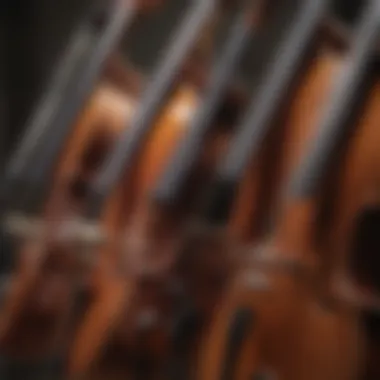
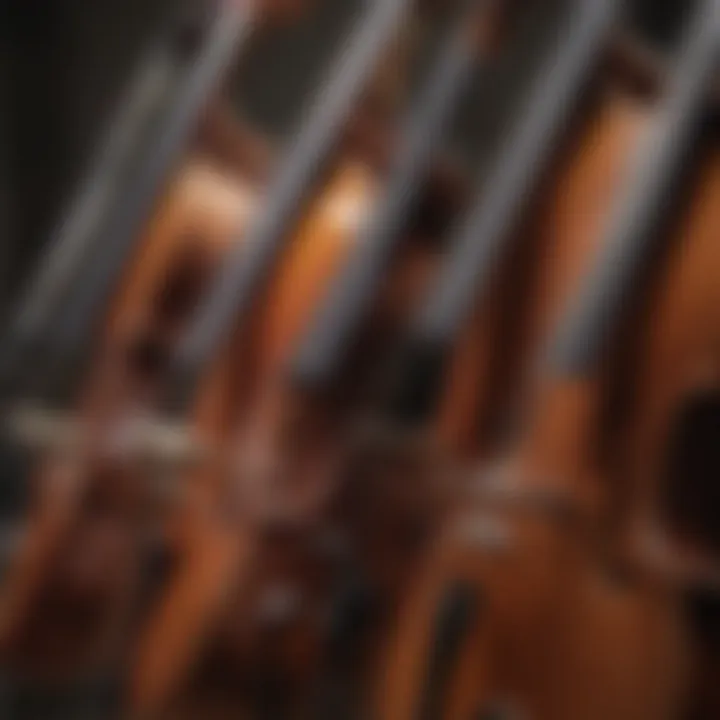
In a string quartet setting, players might introduce syncopation or change up the dynamics to create contrast within sections of the piece. For instance, an energetic opening can smoothly transition into a more reflective passage, showcasing the quartet's versatility. It allows for pauses or slight delays that can amplify emotional emphasis.
When adapting the rhythmic structure, it's also vital to consider how performers will interact. Maintaining cohesive timing while allowing for individual expression is key.
"Music is the shorthand of emotion." — Leo Tolstoy
By thoughtfully arranging 'Stand By Me' for string instruments, musicians not only pay homage to its original form but also explore new pathways for the song to be experienced in a contemporary context. Each technical consideration leads to an enriching performance that resonates on multiple levels, leaving a lasting impact on both players and listeners.
Interpretations by Notable Quartets
The interpretations of 'Stand By Me' by various string quartets offer a rich tapestry of performances that resonate deeply with the listeners. Each interpretation sheds light on the nuances inherent in the piece, showcasing not just technical skill but also emotional depth. The importance of this topic lies in the way these quartets capture the essence of the original song while transforming it through their unique lens. Furthermore, analyzing these performances allows us to appreciate how different ensembles approach the melodic and harmonic components of the work, reflecting their individual style and context.
Comparative Analysis of Different Performances
When looking at the numerous performances of 'Stand By Me' by notable quartets, it's intriguing to observe the differing interpretations based on performance style, instrumentation, and emotional conveyance. For instance, the performance by the Brooklyn String Quartet emphasizes a lively, upbeat tempo that adds a sense of joy while maintaining the song's core message of companionship.
In contrast, the interpretation by the Calder Quartet takes a more subdued and contemplative approach, allowing the strings to intertwine in a manner that evokes a deep sense of nostalgia. This divergence in style not only reflects the unique aesthetics of the ensembles but also invites listeners to experience the song's emotional landscape from various perspectives. Performing techniques also play a significant role in these interpretations. Some quartets may favor a more rigorous technique that showcases technical virtuosity, while others could prioritize emotional expression, opting for a softer touch that transcends sheer skill.
"Music is the shorthand of emotion." - Leo Tolstoy
Both extremes can yield compelling results, drawing varied audiences who connect differently with the same piece.
Exploration of Signature Styles
Signature styles of renowned string quartets immensely contribute to how 'Stand By Me' is perceived. Take, for example, the Emerson String Quartet, known for their meticulous attention to tonal quality and dynamics. Their interpretation, rich in vibrato and nuanced changes in volume, feels almost cinematic, turning the simple chords of the original into a powerful narrative that pulls at the heartstrings.
On the other hand, a group like the Dover Quartet might adopt a more modern sensibility, incorporating elements of improvisation that injects an unexpected freshness into the arrangement. Their discussions on interpretation suggest a willingness to push boundaries, creating a performance that feels alive and spontaneous.
This continual dialogue between tradition and innovation makes interpretations by notable quartets an essential aspect of understanding 'Stand By Me' in a new light. It illustrates how the piece not only survives but thrives across generations, adapting to the ever-evolving musical landscape.
Cultural Relevance of 'Stand By Me'
The cultural significance of 'Stand By Me' transcends mere musical notes or lyrical content. Its roots run deep, reaching into various social and emotional landscapes that reflect the human experience. As we explore this song, its role within social movements and its influence on present-day music, we uncover layers of meaning that solidify its enduring presence in our collective memory.
The Song's Role in Social Movements
Certainly, 'Stand By Me' has evolved into an anthem for social justice and collective resilience. The song resonates powerfully in the context of movements advocating for civil rights, equality, and community solidarity. Its core message—standing together in the face of adversity—champions the spirit of unity.
"Whenever you are in trouble, just call on me, I'll be there."
This lyric encapsulates the essence of mutual support, a theme deeply cherished in struggles against systemic injustice. For instance, during the civil rights movement in the 1960s, activists found hope and strength in this poignant melody, using it as a rallying cry.
Notably, various reinterpretations of the song over decades have highlighted its adaptability. One might recall the stirring rendition by the likes of Ben E. King, which continues to echo in protests, reminding individuals of their power when they stand together. Through its evocative simplicity, 'Stand By Me' has become a bridge linking generations, illustrating how music can empower social change.
Influence on Contemporary Music
In the realm of contemporary music, 'Stand By Me' serves not merely as a relic of the past but as an enduring influence that weaves its way into modern compositions. Artists across genres have drawn inspiration from its melodic structure and emotional depth, often infusing their own styles into reinterpretations. From rock bands seeking to connect with broader audiences to solo artists attempting to evoke nostalgia, the song remains a pivotal touchstone.
Some notable influences include:
- Hip-hop artists sampling its melody to convey deeper narratives.
- Indie musicians infusing their own storytelling within its chords, adding a textured layer of meaning.
- Pop stars revisiting its themes of love and loyalty, showcasing its relevance in youthful experiences today.
The remarkable versatility of 'Stand By Me' lends it to diverse musical landscapes, ensuring that its harmonic essence continues to inspire. Each new arrangement and performance acts as a testament to its timelessness, where both the old and new coexist beautifully.
In summary, the cultural relevance of 'Stand By Me' resounds through social movements and contemporary music. It is a testament to the intrinsic power of music to evoke emotions, inspire unity, and promote change. Through its multifaceted interpretations, the song retains its position not only as a beloved classic but also as a living, breathing articulation of the human spirit.


Technical Challenges for Performers
When it comes to performing an arrangement of a beloved song like 'Stand By Me' for string quartet, musicians face unique technical challenges. Understanding these hurdles is crucial for both performers and composers. They highlight not just the demands of the piece but also the level of artistry required to convey its powerful emotional undertones while maintaining cohesion within the ensemble.
Mastering the Arrangement
To begin with, mastering the arrangement is no small feat.
- Complexity: The very essence of 'Stand By Me' intertwines various musical elements — including melody, harmony, and rhythm — that may not traditionally appear in string music. Here, every note counts. String musicians must translate vocal ad-libs into instrumental lines that resonate. Each section — first violin, second violin, viola, and cello — must grasp their specific role while understanding the piece's overall flow.
- Technique: Precision in bowing and fingering becomes imperative. The transitions between pizzicato and legato, for example, must be seamless. Not to mention, intonation challenges arise, particularly when executing the intricate harmonies that often fold over one another. Musicians need to balance the melodic responsibilities and harmonic support without overpowering or drowning out each other.
- Expression: Capturing the emotional pulse of the song is another aspect of mastering the arrangement. Performers must develop an insight into phrasing. Simply hitting the right notes isn't enough. Dynamics come into play as well. The quartet needs to navigate crescendo and decrescendo passages mindfully, making choices about where to swell and where to soften.
"The mastery of an arrangement goes beyond technical ability; it's about translating the heart of the song into the strings."
Achieving Cohesion in Ensemble Performance
Next comes the challenge of achieving cohesion within the ensemble.
- Communication: Strong communication among members is essential. In a string quartet, every performer’s input can significantly impact the group dynamic. Visual contact during performance can spur coordinated changes in dynamics or tempo. It’s about creating a dialogue — where each member feels empowered to respond musically.
- Listening Skills: Each player must develop acute listening skills to recognize nuances in rhythm and pitch. Being attuned to their fellow musicians can lead to better timing and a unified sound. This level of awareness encourages musicians to adjust their expressions to fit the overall intention of the arrangement.
- Rehearsal Techniques: Rehearsals play a crucial role in building that cohesion. Taking the time to work on tricky transitions or experimenting with different interpretations is vital. An effective rehearsal often blends moments of rigorous practice with time for exploration, allowing the musicians to foster their creativity within the framework of the pre-arranged music.
In summary, the technical challenges of performing 'Stand By Me' through a string quartet lens aren't just hurdles. They build a foundation for a compelling musical experience that resonates with audiences. Concerted efforts in mastering arrangements and achieving a cohesive sound can turn a simple rendition into a rich exploration of artistry.
The Emotional Impact of 'Stand By Me'
The emotional resonance of "Stand By Me" cannot be overstated, particularly when it is interpreted through the lens of a string quartet. This arrangement brings forth a unique depth that enhances the song's intrinsic rightness, mingling with its profound message of support and companionship. What makes this piece stand out is its ability to stir nostalgia and evoke a range of emotions through both its melodic structure and the dynamics of the string instruments.
Evoking Nostalgia through Music
Music has a remarkable ability to transport us back in time, and "Stand By Me" excels at doing just that. The melodies, when played by a string quartet, highlight a gentleness that aligns perfectly with the song's themes of friendship and unconditional support. Strings often resonate with the core of human emotion, and by adapting this piece into a quartet arrangement, performers can tap into that emotive power.
- Intimate Quality: The warm tones of the cello complemented by the lilting sounds of the violins create an intimate listening experience. This closeness can remind listeners of personal relationships, creating a sense of connection that resonates deeply.
- Dynamic Range: The variations in dynamics—soft whispers contrasted against fuller eruptions—can mirror the ups and downs of relationships. This dynamic quality is crucial in evoking emotions tied to nostalgia, making audiences reflect on their own lives and shared memories.
As violinists glide smoothly from legato lines to spiccato bursts, they evoke feelings of longing and sentimentality. The careful selection of bowing techniques by the musicians imbues the performance with an emotional narrative, making it a journey back to cherished moments.
Interpreting Lyrics through Instrumentation
When the lyrics of "Stand By Me" are interpreted instrumentally, the string quartet finds a way to convey the underlying messages without words. The instruments become the voice of the song, speaking volumes about loyalty and solidarity.
- Melodic Interpretation: Each instrument plays a role that reflects the song’s lyrical content. For instance, the first violin often carries the melody, mirroring the hopeful tone of the lyrics, while the second violin and viola add harmonic layers that suggest compassion and resilience.
- Harmonic Complements: The cello anchors the arrangement, providing a foundation that symbolizes stability. This role aligns with the lyrics' themes of standing strong beside someone through tough times.
Taken together, the string instruments create a tapestry of sound that narrates the story behind the song. It turns a simple tale of friendship into a rich audio experience, where the listener feels the weight of each note, as if those melodies are singing directly to their heartstrings.
The ability of music to interpret and amplify emotions through instrumentation is one of its most powerful attributes, shaping how we experience lyrical content.
In exploring the emotional impact of "Stand By Me," particularly through the orchestration of a string quartet, we see how different elements come together to elevate the piece to new heights. This sophisticated arrangement not only honors the original composition but also gives it a fresh perspective that resonates with listeners today.
Epilogue and Future Perspectives
As we draw our exploration of 'Stand By Me' through the lens of a string quartet to a close, it becomes clear that this arrangement embodies more than just a musical reinterpretation; it reveals the transformative power of music across diverse traditions and settings. Through our analysis, we have seen how this classic tune adapts to the nuances of string instrumentation, creating a dialogue between the original essence of the song and innovative interpretations. The future of string quartets, especially when infusing popular music, hinges heavily on their ability to connect emotionally with audiences. This is not simply a technical challenge, but a profound opportunity to bridge generational gaps and genres, enabling classical music to remain relevant.
Enduring Legacy of 'Stand By Me'
The enduring legacy of 'Stand By Me' stems from its roots in community and social justice, crafting a universal message that resonates through religions, demographics, and time periods. Since its debut in the late 1950s,
- Constant Relevance: The song has resonated during pivotal moments in history, accompanying social movements and personal narratives, providing solace and strength. This inherent adaptability keeps its essence alive, almost like a well-worn, cherished book that refuses to gather dust.
- Legacy in Adaptation: The various interpretations, particularly those by string quartets, breathe new life into the piece, allowing it to evolve while staying true to the heart of the song. The emotional depth that a string quartet brings enhances the lyrical meaning, transforming spoken word into an emotional journey through harmony. Each bow stroke and string pluck adds layers of interpretation in ways words alone cannot convey.
The Future of String Quartets in Popular Music
Looking ahead, the future of string quartets in the realm of popular music seems bright.
- Genre-blending Potential: As musicians move further into the exploration of blending genres, string quartets stand poised at the forefront of this evolution. The classical framework provides a rich backdrop for integrating elements from jazz, rock, and electronic music. This allows for innovative compositions that attract a wide range of listeners, expanding their audience well beyond traditional concert-goers.
- Technological Integration: With advancements in technology, performances can now reach virtual platforms, allowing quartets to experiment with digitally enhanced experiences. Video streaming and social media provide platforms for quartets to showcase their renditions of popular songs, reaching global audiences without the need for geographical constraints.
- Educational Outreach: String quartets are also crucial in educational settings. By incorporating popular music into their repertoire, educators can engage younger audiences, demystifying classical music and showcasing its relevance.
As we look at the interplay between 'Stand By Me', string quartets, and the future of popular music, it becomes evident that in a world where the threads of tradition and modernity often clash, creativity becomes the bridge. The legacy of this timeless piece serves not only as a reminder of the enduring spirit of music but also as an invitation for future generations to continue exploring, blending, and innovating.







